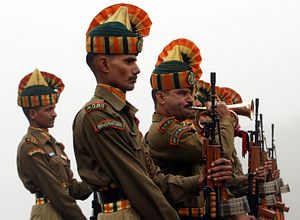China has risen and India is rising, but how will their bilateral relationship affect the world? Over time, Beijing and New Delhi could deepen existing patterns of cooperation and amity or alternatively veer headlong into intensified competition and conflict. While there is a low probability of armed conflict between China and India, such a scenario would pose significant risks to both countries, the region, and the global economy. In a recent contingency memo for the Council on Foreign Relations, I explored some of the pathways to conflict and U.S. policy options in response, but it’s worth taking another look at just what could upset the current balance between Asia’s two giants and the consequences thereof.
There are good reasons to anticipate greater cooperation. Policymakers in Beijing and New Delhi are preoccupied with domestic developments and generally hold similar views on issues that affect prospects for sustaining economic growth at home, including trade, climate change, and global governance. Sino-Indian collaboration in new multilateral settings – such as the BRICS summits, the Asian Infrastructure Investment Bank, and the Shanghai Cooperation Organization – has the potential to grow deeper and more significant over time.
On the other hand, past suspicions as well as longstanding and emerging disputes could poison future relations. Suspicions date to 1962, when India lost a short but decisive war to China. China occupies territory claimed by India, India occupies territory claimed by China, and both compete for access to scarce water and energy resources. Furthermore, both China and India actively pursue closer ties with each other’s traditional adversaries: China with Pakistan and India with Japan. And as India and China build increasingly capable and expeditionary military forces, their areas of operation will overlap more frequently.
Of course, conflict and cooperation are not mutually exclusive in international relationships. Judging from the example of Washington and Beijing, the most plausible future scenario is one in which New Delhi and Beijing deepen their commercial ties and cooperate in areas of mutual interest yet simultaneously remain distrustful enough of each other’s intentions to warrant diplomatic and military hedging.

































